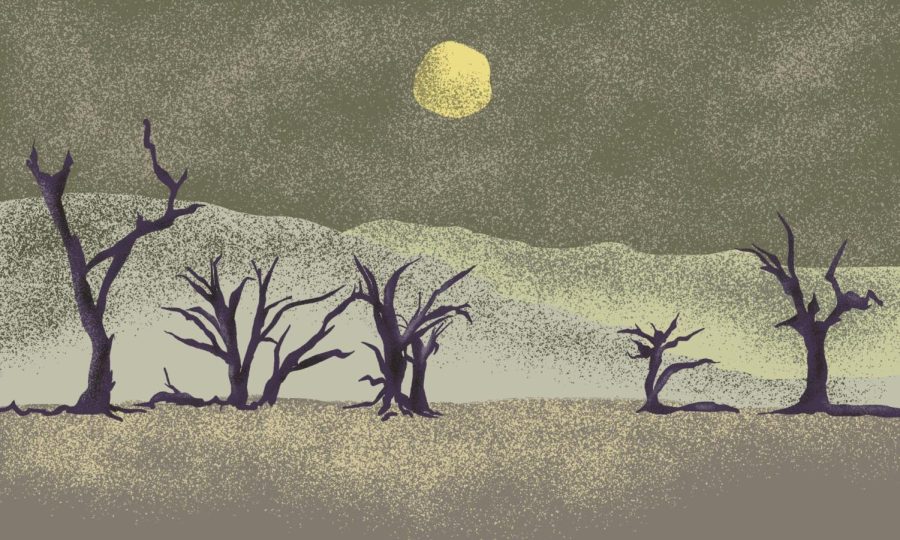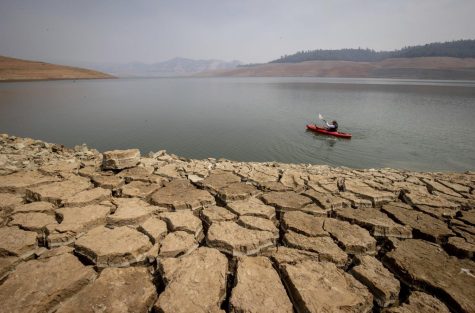What the Southwestern drought means for the rest of the U.S.
As the planet warms, the impacts of climate change are seeping into the everyday lives of many Americans, particularly in the drought-ridden American Southwest.
The majority of the American Southwest has been in a drought for 20 years, and there seems to be no end in sight. In particular, California, Arizona, New Mexico, Utah and Nevada are bearing the brunt.
“It’s beyond a drought at this point,” said Mark Potosnak, DePaul environmental science professor.
According to the U.S. Drought Monitor, Southwestern topography ranges from “abnormally dry” to “exceptional drought,” despite the monsoon that hit the region over the summer.
The monsoon happened after a series of wildfires took over the region, which might have impeded its ability to alleviate the drought.
“Because the land is so dry, because everything is so dry, it just is kindling and goes up like nothing, and because of that, they’re experiencing more wildfires, and then because of the fires, there’s flooding afterwards,” said DePaul alum Lacey Latch, who currently lives in Flagstaff, Ariz.
Scorched land is unable to absorb water the way that unscorched land can, which leads to flooding and landslides.
“When you have vegetation, you have increased infiltration, so the water [instead of] rushing along the ground and just running off, goes into the ground water where it gets stored and can help the ecosystem be maintained,” Potosnak said. “[After] a wildfire, the water just rushes down. There’s nothing impeding it.”
Maintaining groundwater levels is particularly important in the Southwest.
“The groundwater is at a pretty deep level in the Southwest and is not easily recharged,” DePaul public policies professor Kelly Tzoumis said.
According to the U.S. Department of Agriculture Farm Service Agency, California alone produces more than 13% of the nation’s agriculture.
“The problem is 80% of that water is going to agriculture in the Central Valley of California, which many of us benefit from the fruits and vegetables in that area,” Tzoumis said.
As weather patterns shift, it is likely that California and the Southwest will not be able to provide the rest of the country with agricultural products like it has been.
“Tradewinds can shift, storm patterns can shift,” Tzoumis said. “We’re already seeing a shift in precipitation, so I do think our agricultural zones certainly could shift as part of climate change.”
If these droughts continue, it could result in major shifts in the agricultural industry that could be detrimental to the American public.
“It means our fruits and vegetables are going to be more expensive, and they’re going to be expensive because water’s going to become scarce… and gasoline, the price of oil in transporting these vegetables,” Tzoumis said.
In the last 20 years, the Southwest’s major sources of water have been dwindling.
“Probably the most iconic piece of this is Lake Mead,” Potosnak said. “The lake levels of Lake Mead have just dropped and dropped and dropped. I remember when I first started teaching about climate change 15 years ago, talking about Lake Mead had been at a historical low and it just keeps going lower and lower and lower.”
According to the National Park Service, 25 million people rely on water from Lake Mead.
“We had [the] monsoon this year,” Tzoumis said. “It did increase about three, four feet of Lake Mead. Lake Mead has been under severe drought, and it’s several hundred feet lower… three feet is not enough.”
Tzoumis said the majority of the water that the Southwest relies on comes from snow precipitation in the Colorado River that comes from the Colorado mountains, so mild winters could be worsening the drought.
States south of Colorado have different allotments for water usage from the river, which can be harmful to the Navajo Nation.
“[Navajo] really rely on the drinking water coming out of the Colorado [River] for a variety of means, and they’re kind of downstream from the other users, and oftentimes, their water rights are infringed upon by the other states,” Tzoumis said.
Despite more than 170,000 living on the reservation, the Navajo Nation often has little say in controlling their natural resources.
“Their lands are held in trust by the federal government, and so it is very difficult for the tribal nations to develop their lands, to build wealth and to control their resources,” Tzoumis said.
A lack of infrastructure and development could also exacerbate the effects of the drought for the Navajo Nation.
“They’re [Navajo] rural as rural can get out there,” Latch said. “I imagine it’s hitting them just as hard as anybody else, and then you’ll go around and see they have a lot of pickup trucks with the giant plastic jugs of water… I think they rely heavily on that.”
Recent migration patterns into the Southwest are stretching what little water the region has even thinner.
“We’re an aging society, and when people age they love to go where it’s warm… but the Southwest, it’s just hitting capacity,” Potosnak said. “We’re getting to the point where there’s just not going to be enough water for everybody to keep moving there.”
Tzoumis believes that the solution to the drought lies in developing and streamlining water desalination technology.
“We don’t have a shortage on this planet of salt water, and so we just need to desalinate it,” Tzoumis said.
Connect with Ruchi Nawathe: @ruchinawathe | [email protected]

















